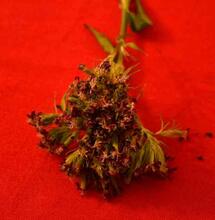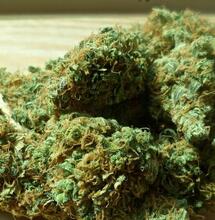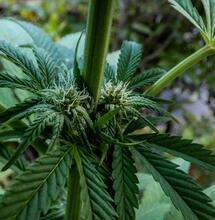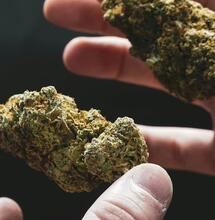Why is CBG Special?

CBG is one of the most promising minor cannabinoids extracted from Cannabis plants. Most strains contain exceptionally small amounts of CBG that less than 1%. However, CBG has a crucial role in creating other cannabinoids, including the two most familiar ones — THC and CBD.
CBG stands short for Cannabigerol. It's the mother cannabinoid of all cannabinoids. As cannabis plants reach maturity, CBGA breaks down and is converted into THCA and CBDA, among other compounds. Those are the inactive forms of THC and CBD before they are heated. The process of "decarboxylation" releases CBD, THC, and a small quantity of CBG.
While THC is where we get high from cannabis, CBG is more similar to CBD in terms of the effects. CBG has many great potentials to help support our health and wellbeing, therefore it's becoming one of the most treasured cannabinoids during extraction.
That CBG is a success speaks the fact that a growing number of new cannabis strains contain satisfying amounts of CBG. Do-si-dos is a perfect example.
Huge Potential in Medicine
Research suggests that CBG may find numerous applications in medicine in the future. One study suggests that CBG may effectively treat eye conditions such as glaucoma by helping reduce the blood pressure around the eyes. In addition, CBG is considered a potent vasodilator (vasodilators are medications that dilate blood vessels), and it can effectively decrease inflammation in those struggling with inflammatory bowel disease.
Research results for CBG have also been favorable when tested as a possible remedy for easing or preventing bladder dysfunction disorders and for general pain relief, common skin conditions such as psoriasis, and as an antidepressant.
A study from 2015 further suggests that CBG may have neuroprotective quality. The study demonstrated how the cannabinoid protects neurons in mice with Huntington's disease, a condition where the brain suffers nerve cell degeneration.
It even appears that CBG could be helpful in the fight against cancer. Research has shown that CBG can block the process of cancer cell growth. In another study carried out on mice, CBG inhibited the spread of cancer cells associated with colon cancer.
European researchers have also tested CBG against MRSA, a particularly dangerous Staphylococcus bacteria. The mother cannabinoid was shown as an effective antibacterial against MRSA.
Last but not least, tested in its pure form, CBG acted as a superior appetite stimulant in rats. A promise for a new medicine for muscle waste treatment and severe weight loss commonly seen in the terminal stages of cancer and other diseases.
High Costs to Extract CBG
One major obstacle for a more widespread use of CBG is its excess cost for extraction. It takes a fortune to obtain this cannabinoid from cannabis crops, so much that some call it the "Rolls Royce of cannabinoids."
Because of the amount of plant material needed to extract even small quantities of CBG, it is five times more expensive than CBD. It would take twenty times the amount of biomass to remove the same amount of CBG from a batch of cannabis with a 1% CBG concentration.
Currently, CBG extraction requires highly specialized, expensive equipment. One way to go forward with it, to make CBG more accessible and affordable, is to create more plant strains with more substantial amounts of CBG. Such a task has already been delegated to plant geneticists.
More research involving CBG alone and in combination with other minor cannabinoids is coming in. The knowledge and insights so far have offered much promise about the full scope of uses of CBG.










